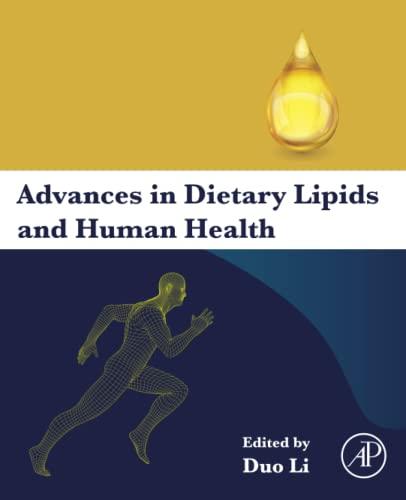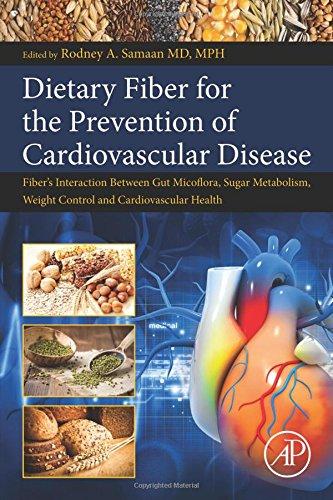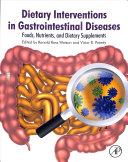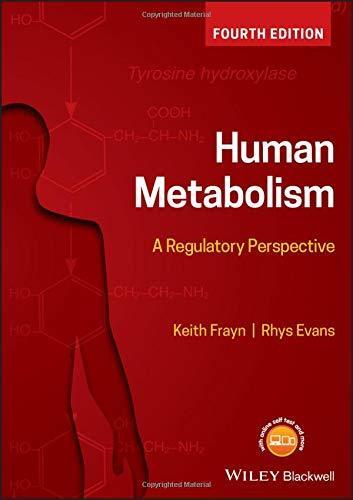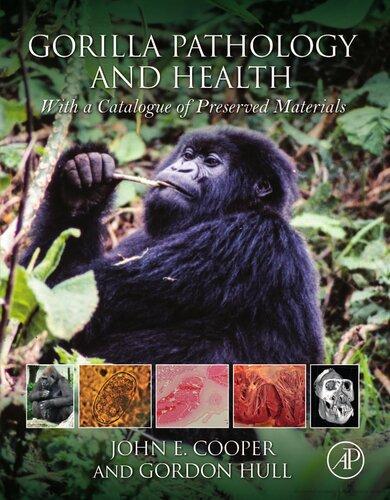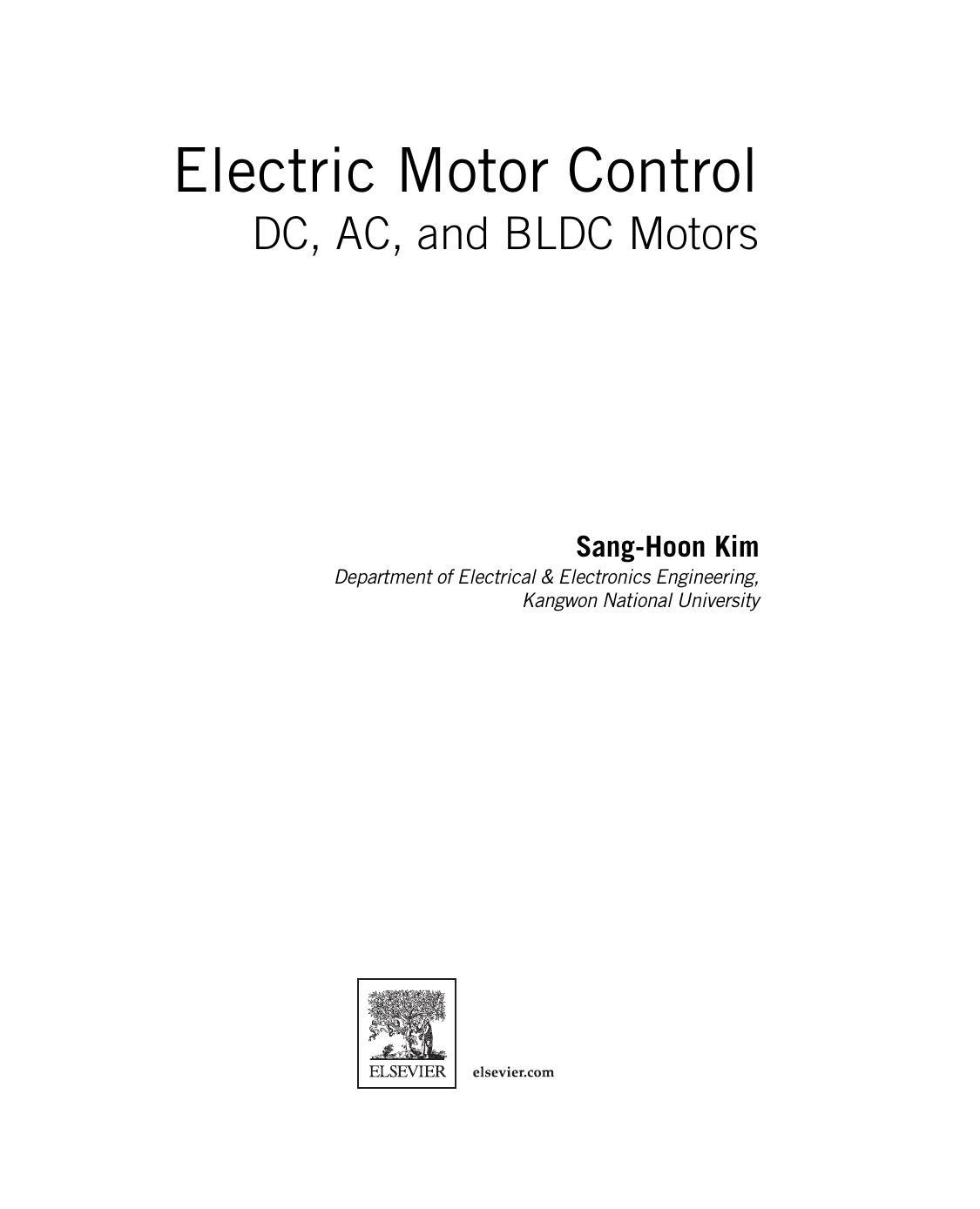DietaryPolyphenols
MetabolismandHealthEffects
Editedby
FranciscoA.Tomás-Barberán
DepartmentofFoodScienceandTechnology
CEBAS-CSIC,Murcia,Spain
AntonioGonzález-Sarrías
DepartmentofFoodScienceandTechnology
CEBAS-CSIC,Murcia,Spain
RocíoGarcía-Villalba
DepartmentofFoodScienceandTechnology
CEBAS-CSIC,Murcia,Spain
Thiseditionfirstpublished2021
©2021JohnWiley&Sons,Inc.
Allrightsreserved.Nopartofthispublicationmaybereproduced,storedinaretrievalsystem,or transmitted,inanyformorbyanymeans,electronic,mechanical,photocopying,recordingor otherwise,exceptaspermittedbylaw.Adviceonhowtoobtainpermissiontoreusematerialfrom thistitleisavailableathttp://www.wiley.com/go/permissions.
TherightofFranciscoA.Tomás-Barberán,AntonioGonzález-Sarrías,andRocíoGarcía-Villalba tobeidentifiedastheauthorsoftheeditorialmaterialinthisworkhasbeenassertedin accordancewithlaw.
RegisteredOffice
JohnWiley&Sons,Inc.,111RiverStreet,Hoboken,NJ07030,USA
EditorialOffice
TheAtrium,SouthernGate,Chichester,WestSussex,PO198SQ,UK
Fordetailsofourglobaleditorialoffices,customerservices,andmoreinformationaboutWiley productsvisitusatwww.wiley.com.
Wileyalsopublishesitsbooksinavarietyofelectronicformatsandbyprint-on-demand.Some contentthatappearsinstandardprintversionsofthisbookmaynotbeavailableinotherformats.
LimitofLiability/DisclaimerofWarranty
Whilethepublisherandauthorshaveusedtheirbesteffortsinpreparingthiswork,theymakeno representationsorwarrantieswithrespecttotheaccuracyorcompletenessofthecontentsofthis workandspecificallydisclaimallwarranties,includingwithoutlimitationanyimpliedwarranties ofmerchantabilityorfitnessforaparticularpurpose.Nowarrantymaybecreatedorextendedby salesrepresentatives,writtensalesmaterialsorpromotionalstatementsforthiswork.Thefact thatanorganization,website,orproductisreferredtointhisworkasacitationand/orpotential sourceoffurtherinformationdoesnotmeanthatthepublisherandauthorsendorsethe informationorservicestheorganization,website,orproductmayprovideorrecommendationsit maymake.Thisworkissoldwiththeunderstandingthatthepublisherisnotengagedinrendering professionalservices.Theadviceandstrategiescontainedhereinmaynotbesuitableforyour situation.Youshouldconsultwithaspecialistwhereappropriate.Further,readersshouldbe awarethatwebsiteslistedinthisworkmayhavechangedordisappearedbetweenwhenthiswork waswrittenandwhenitisread.Neitherthepublishernorauthorsshallbeliableforanylossof profitoranyothercommercialdamages,includingbutnotlimitedtospecial,incidental, consequential,orotherdamages.
LibraryofCongressCataloging-in-PublicationData
Names:Tomás-Barberán,F.A.(FranciscoA.),editor.|González-Sarrías, Antonio,editor.|García-Villalba,Rocío,editor.
Title:Dietarypolyphenols:metabolismandhealtheffects/edited byFranciscoA.Tomás-Barberán,AntonioGonzález-Sarrías,Rocío García-Villalba.
Othertitles:IFTpressseries.
Description:Hoboken,NJ:Wiley-Blackwell,2021.|Series:IFTpress series|Includesbibliographicalreferencesandindex.
Identifiers:LCCN2020019599(print)|LCCN2020019600(ebook)|ISBN 9781119563723(cloth)|ISBN9781119563716(adobepdf)|ISBN 9781119563747(epub)
Subjects:MESH:Polyphenols–metabolism|Polyphenols–pharmacology| NutritiveValue
Classification:LCCQK898.P764(print)|LCCQK898.P764(ebook)|NLMQV 223|DDC613.2/86–dc23
LCrecordavailableathttps://lccn.loc.gov/2020019599
LCebookrecordavailableathttps://lccn.loc.gov/2020019600
CoverDesign:Wiley
CoverImages:Pomegranate©October22/GettyImages,Chemicalbondingstructurescourtesy ofFranciscoA.Tomás-Barberán,Humanfigure©ChristosGeorghiou/Shutterstock
Setin10/12ptWarnockProbySPiGlobal,Chennai,India 10987654321
TitlesintheIFTPressseries
• AcceleratingNewFoodProductDesignandDevelopment,2nd Edition(JacquelineH. Beckley,LeslieJ.Herzog,M.MicheleFoley)
• Anti-AgeingNutrients:Evidence-BasedPreventionofAge-AssociatedDiseases (DelimindaNeves)
• BioactiveCompoundsfromMarineFoods:PlantsandAnimalSources(Blanca Hernandez-Ledesma,andMiguelHerrero)
• BiofilmsintheFoodEnvironment,2nd Edition(AnthontL.PomettoIII,andAliDemirci)
• Bitterness:Perception,ChemistryandFoodProcessing(MichelAliani,andMichaelN.A. Eskin)
• EssentialOilsinFoodProcessing:Chemistry,SaferyandApplications(SeyedMohammed BagherHashemi,AminMousaviKhaneghah,andAndersondeSouzaSant’Ana)
• Flavor,SatietyandFoodIntake(BeverlyTepper,andMartinYeomans)
• FoodCarotenoids:Chemistry,BiologyandTechnology(DeliaB.Rodriguez-Amaya)
• FoodOligosaccharides:Production,AnalysisandBioactivity(F.JavierMoreno,andMaria LuzSanz)
• FoodSafetyDesign,TechnologyandInnovation(HelmutTraitler,BirgitColeman,and KarenHofmann)
• FoodTextureDesignandOptimization(YadunandanLalDar,JosephM.Light)
• FunctionalFoodsandBeverages:InvitroAssessmentofNutritional,Sensory,andSafety Properties(NicolasBordenave,andMarioG.Ferruzzi)
• MathematicalandStatisticalMethodsinFoodScienceandTechnology(DanielGranato, andGastonAres)
• MembraneProcessingforDairyIngredientSeparation(KangHu,andJamesDickson)
• MicrobialSafetyofFreshProduce(XuetongFan,BrendanA.Niemira,ChristopherJ. Doona,FlorenceE.Feeherry,andRobertB.Gravani)
• MicrobiologyandTechnologyofFermentedFoods,2nd Edition(RobertW.Hutkins)
• MicrobiologyinDairyProcessing:ChallengesandOpportunities(PalmiroPoltronieri)
• NanotechnologyandFunctionalFoods:EffectiveDeliveryofBioactiveIngredients (CristinaSabilov,HongdaChen,andRickeyYada)
• NaturalFoodFlavorsandColorants,2nd Edition(MathewAttokaran)
• PackagingforNonthermalProcessingofFood,2nd Edition(MelvinA.Pascall,andJung H.Han)
• ProcessingandNutritionofFatsandOils(ErnestoM.Hernandez,andAfafKamal-Eldin)
• ResistantStarch:Sources,ApplicationsandHealthBenefits(Yong-ChengShi,Clodualdo C.Maningat)
• SprayDryingTechniquesforFoodIngredientEncapsulation(C.Anandharamakrishnan, andPadmaIshwaryaS.)
• Trait-ModifiedOilsinFoods(FrankT.Orthoefer,andGaryR.List)
• WaterActivityinFoods:FundamentalsandApplications,2nd Edition(GustavoV. Barbosa´ Canovas,AnthonyJ.FontanaJr.,ShellyJ.Schmidt,andTheodoreP.Labuza)
Contents
ListofContributors xv
1StructuralDiversityofPolyphenolsand DistributioninFoods 1
AntonioGonzález-Sarrías,FranciscoA.Tomás-Barberán, andRocíoGarcía-Villalba
1.1Introduction 1
1.2ClassificationandChemistryofPolyphenols 2
1.2.1Flavonoids 2
1.2.2Nonflavonoids 7
1.3DietaryIntakeandFoodSourcesofPolyphenols 10
1.3.1Flavonoids 11
1.3.2Nonflavonoids 14
1.4DatabasesUsedtoAssessDietaryExposureto Polyphenols 16
1.5Bioavailability,Metabolism,andBioactivityofDietary Polyphenols 17 Acknowledgments 20 References 20
2NonextractablePolyphenols:ARelevant GroupwithHealthEffects 31
YuridiaMartínez-Meza,RosalíaReynoso-Camacho, andJaraPérez-Jiménez
2.1Introduction:TheConceptofNonextractable Polyphenols(NEPP) 31
2.2ContributionofNEPPtoTotalPolyphenolContent andIntake 33
viii Contents
2.2.1StrategiesfortheExtractionandAnalysisof NEPP 34
2.2.2NEPPContentinCommonFoods 38
2.2.3EstimationofNEPPIntakeinDifferent Populations 40
2.3MetabolicFateofNEPP:AKeyProcessforTheir HealthEffects 42
2.3.1CurrentEvidenceoftheMetabolicTransformationof NEPP 42
2.3.2SpecificFeaturesoftheMetabolicFateofNEPP 46
2.4HowNEPPmayExhibitHealthEffects 48
2.4.1AntioxidantEffects 48
2.4.2MicrobiotaModulation 51
2.4.3BiologicalActivitiesofMicrobialMetabolites 53
2.4.4SynergywithDietaryFiber 58
2.5StudiesontheHealthEffectsofNEPP 60
2.5.1LocalvsSystemicEffects 60
2.5.2EffectsonGastrointestinalHealth 62
2.5.3EffectsonCardiometabolicHealth 64
2.6Perspectives 66 References 68
3AnalyticalStrategiesforDetermining PolyphenolsinFoodsandBiological Samples 85
LucíaOlmo-García,RominaP.Monasterio,AadilBajoub, andAlegríaCarrasco-Pancorbo
3.1Introduction:ImportanceoftheDeterminationof Polyphenols 85
3.2MostWidelyUsedExtractionSystemsandNew Trends 89
3.3DeterminationofthePhenolicCompoundsin Foods 92
3.3.1ClassicMethodsForPolyphenolsDetermination: SpectrophotometricAssays 92
3.3.2EvolutionoftheTraditionalMethodstoCharacterize thePolyphenolicFractionofFoods:Chromatographic andElectrophoreticSeparationandSubsequent Detection 94
3.3.3OtherAnalyticalStrategies 106
3.4SomeConsiderationsRegardingtheDeterminationof PolyphenolsinBiologicalSamples 107
3.5ConclusionsandFutureDirections 111 Acknowledgments 116 References 116
4Hydroxycinnamates 129
IziarA.Ludwig,LauraRubió,AlbaMacià, andMariaP.Romero
4.1Introduction 129
4.2MetabolismofHydroxycinnamatesandMetabolic Pathways 130
4.2.1AbsorptionintheUpperGastrointestinalTract 135
4.2.2AbsorptionintheLowerGastrointestinalTract 136
4.3BioaccessibilityandBioavailabilityof Hydroxycinnamates:InfluenceofFoodMatrix, Processing,Dose,andInterindividual Differences 138
4.3.1BioavailabilityofHydroxycinnamatesinFruits, Vegetables,andBeverages 139
4.3.2BioavailabilityinCereal-BasedProducts 144
4.4BiologicalActivityofHydroxycinnamatesandTheir Derivatives 148 References 153
5FlavonolsandFlavones 163
CláudiaNunesdosSantos,ReginaMenezes,Diogo Carregosa,KaterinaValentova,AlexandreFoito, GordonMcDougall,andDerekStewart
5.1Introduction 163
5.2UptakeandMetabolismofFlavonolsand Flavones 167
5.2.1Flavonolsor3-Hydroxyflavones(Quercetin, Kaempferol,Myricetin) 167
5.2.2Flavones(Luteolin,Apigenin) 170
5.3MicrobiotaFormationofLowMolecularWeight Phenolic,CommonColonicMetabolites 173
5.3.1Flavonols(Quercetin,Kaempferol,Myricetin) 173
5.3.2Flavones(Luteolin,Apigenin) 175
x Contents
5.4HealthEffectsofFlavonolandFlavone Metabolites 177
5.4.1Flavonolsor3-Hydroxyflavones 177
5.4.2Flavones(Luteolin,Apigenin) 181
5.4.3Flavonols,FlavonesandTheirLowMolecularWeight ColonicMetabolitesinHealth 184
5.5ConclusionsandFuturePerspectives 185 Acknowledgments 186 References 186
6Isoflavones 199 CaraL.Frankenfeld
6.1UptakeandMetabolismofIsoflavones 199
6.1.1GutMicrobialMetabolism 199
6.1.2PharmacokineticStudies 201
6.2BiologicalMechanismsofIsoflavones 203
6.2.1Hormonal 203
6.2.2Antioxidant 204
6.2.3Antiinflammatory 205
6.3PhysiologicalandHealthEffectsofIsoflavones 205
6.3.1Bone 206
6.3.2Cancer 208
6.3.3ReproductiveHormones 212
6.3.4CardiovascularDisease,BloodTriglyceridesand Cholesterol,andInflammatoryMarkers 213
6.3.5Diabetes,InsulinResistance,andBloodGlucoseand Insulin 216
6.3.6Obesity 217
6.3.7MenopausalSymptoms 218
6.3.8NeurologicalOutcomes 218
6.4PhysiologicalandHealthEffectsofIsoflavone MetabolitesandMetabotypes 219
6.5SummaryofIsoflavoneIntakeandHealth 221 References 221
7DietaryAnthocyanins 245 IvaFernandes,HélderOliveira,CláudiaMarques,AnaFaria, ConceiçãoCalhau,NunoMateus,andVictordeFreitas
7.1AbsorptionandMetabolismofAnthocyanins 245
7.1.1OralCavityAbsorption 248
7.1.2GastricAbsorption 251
7.1.3IntestinalAbsorption 254
7.1.4MicrobialMetabolism 255
7.2PharmacokineticsofAnthocyanins 258
7.3FactorsAffectingAnthocyaninBioavailability 259
7.4BiologicalActivityofAnthocyaninMetabolites 262
7.4.1PhaseIIMetabolites 265
7.5Conclusion 272 References 272
8Flavan-3-ols:Catechinsand Proanthocyanidins 283 ClaudiaFavari,PedroMena,ClaudioCurti,DanieleDelRio, andDonatoAngelino
8.1Introduction:ChemistryandMainDietary Sources 283
8.2BioavailabilityofFlavan-3-ols 288
8.2.1AbsorptionandMetabolism:NativeandColonic PhaseIIMetabolites 289
8.2.2PharmacokineticsandUrinaryExcretionof CirculatingMetabolites:Interindividual Differences 293
8.3HealthBenefitsofFlavan-3-olsandTheirDerived CirculatingMetabolites 298
8.3.1Cognitive 299
8.3.2InflammationandCardiometabolicDiseases 302
8.3.3UrinaryTractInfections 305
8.4ConclusionsandFuturePerspectives 307 References 308
9EllagitanninsandTheirGutMicrobiotaDerivedMetabolites:Urolithins 319 RocíoGarcía-Villalba,JuanA.Giménez-Bastida,MaríaA. Ávila-Gálvez,FranciscoA.Tomás-Barberán,JuanC.Espín, andAntonioGonzález-Sarrías
9.1ChemistryandSourcesofEllagitanninsandEllagic Acid 319
9.2BioavailabilityofEllagitanninsandEllagicAcid 323
9.3TheMicrobialMetabolismofEllagitanninsandEllagic Acid:Urolithins 324
9.3.1UrolithinProductionandBioavailability 324
9.3.2TissueDistributionofUrolithinsafterConsumption ofEllagitannins 328
9.3.3InteractionofETsandUrolithinswiththeGut Microbiota 329
9.3.4InterindividualVariability:Metabotypes 331
9.3.5AnalysisofUrolithins 332
9.4SignificanceofEllagitannins,EllagicAcid,and UrolithinsforHumanHealth 335
9.4.1AntioxidantEffects 336
9.4.2AntiinflammatoryProperties 338
9.4.3AnticarcinogenicEffects 340
9.4.4NeuroprotectiveEffects 343
9.4.5EstrogenicModulation 344
9.4.6Urolithins,ClinicalTrials,andInterindividual Variability–HealthRelationship 345
9.5Conclusion 347
Acknowledgments 348 References 348
10Lignans 365
KnudE.BachKnudsen,NataljaNørskov,AnneK.Bolvig, MetteSkouHedemann,andHelleNygaardLærke
10.1Introduction 365
10.2LignansinFoods 368
10.3MetabolismofLignans 373
10.3.1KineticsofAbsorptionofPlantLignans 376
10.3.2ConversionofPlantLignanstoEnterolignans 382
10.4BloodLevelsofLignansafterDietary Intervention 387
10.5BioactivityofPlantLignansandEnterolignans 393
10.6ConclusionsandFuturePerspectives 394 Acknowledgments 395 References 395
11Stilbenes:BeneficialEffectsofResveratrol MetabolitesinObesity,Dyslipidemia,Insulin Resistance,andInflammation 407 ItziarEseberri,IñakiMilton-Laskibar,Alfredo Fernández-Quintela,SaioaGómez-Zorita, andMaríaP.Portillo
11.1Introduction:OccurrenceandIntake 407
11.2Absorption,Metabolism,andExcretionof Resveratrol 408
11.3BiologicalEffectsofResveratrolMetabolites 412
11.3.1 Invitro Studies 413
11.3.2 Invivo Studies 428
11.4Conclusion 429 Acknowledgments 429 References 430
12Flavanones 439 GemaPereira-Caro,ColinD.Kay,MichaelN.Clifford,and AlanCrozier
12.1Introduction 439
12.2FlavanonesandTheirOccurrence 441
12.3AbsorptionofFlavanoneMetabolitesintheProximal andDistalGastrointestinalTract 443
12.4Formationof3-(3′ -Hydroxy-4′Methoxyphenyl)HydracrylicAcid 454
12.5FactorsAffectingtheBioavailabilityof Flavanones 457
12.5.1ImpactofPhysicalActivity 457
12.5.2MatrixEffects 458
12.5.3Probiotics 459
12.5.4Inter-andIntraindividualVariability 460
12.5.5OtherEffects 462
12.6AnalysisofFlavanoneMetabolitesand Catabolites 462
12.7BiomarkersandMetabolomics 465
12.8ProtectiveEffects 467
xiv Contents
12.8.1CardiovascularDisease 468
12.8.2DiabeticandMetabolicSyndrome 471
12.8.3Cancer 472
12.8.4CognitionandNeuroprotection 473
12.8.5Bones 474
12.8.6Liver 474
12.8.7ImmunomodulationandAntiinflammatory Activity 474
12.8.8GastricFunctionandtheMicrobiome 475
12.8.9ModulationoftheMicrobiotaandBiologicalActivity ofMicrobialMetabolites 475 References 479
13UnderstandingPolyphenols’HealthEffects ThroughtheGutMicrobiota 497
MariaV.Selma,FranciscoA.Tomás-Barberán,Maria Romo-Vaquero,AdrianCortés-Martín,andJuanC.Espín
13.1MicrobialMetabolismofDietaryPolyphenols 497
13.2BacteriaResponsibleforDietaryPolyphenols TransformationsandHealthImplications 507
13.3ModulationofGutMicrobiotabyDietary Polyphenols 516 Acknowledgments 519 References 519
Index 533
ListofContributors
AadilBajoub DepartmentofBasicSciences, NationalSchoolofAgriculture, km10,HajKaddourRoad,B.P. S/40,Meknès,Morocco.
AdrianCortés-Martin LaboratoryofFoodandHealth, ResearchGrouponQuality, SafetyandBioactivityofPlant Foods, Dept.FoodScienceand Technology,CEBAS-CSIC, Murcia,Spain.
AlanCrozier DepartmentofNutrition, UniversityofCalifornia,Davis, California,USA. and SchoolofMedicine,Dentistry andNursing,Universityof Glasgow,Glasgow,UK. Email:alan.crozier44@ gmail.com
AlbaMacià DepartamentdeTecnologiadels Aliments-ÀreaNutrició, UniversitatdeLleida,Lleida, Spain.
AlegríaCarrasco-Pancorbo DepartmentofAnalytical Chemistry,FacultyofScience, UniversityofGranada, Ave.Fuentenuevas/n,18071, Granada,Spain. Email:alegriac@ugr.es
AlexandreFoito TheJamesHuttonInstitute, Invergowrie,Dundee,Scotland UK.
Alfredo Fernández-Quintela NutritionandObesitygroup, DepartmentofNutritionand FoodSciences, FacultyofPharmacy,University oftheBasqueCountry (UPV/EHU)andLucioLascaray ResearchCentre,Vitoria,Spain. and
CIBERPhysiopathologyof ObesityandNutrition (CIBERobn),InstituteofHealth CarlosIII,Spain.
xvi ListofContributors
AnaFaria
NutritionandMetabolism, FaculdadedeCiências Médicas|NOVAMedicalSchoo|, UniversidadeNOVAdeLisboa, Lisboa,Portugal. and
CINTESIS,CenterforHealth TechnologyServicesResearch, Porto,Portugal. and ComprehensiveHealthResearch Centre,UniversidadeNOVAde Lisboa,Lisboa,Portugal.
AnneK.Bolvig
AarhusUniversity,Department ofAnimalScience,DK-8830 Tjele,Denmark
AntonioGonzález-Sarrías LaboratoryofFoodandHealth, ResearchGrouponQuality, SafetyandBioactivityofPlant Foods, Dept.FoodScienceand Technology,CEBAS-CSIC, Murcia,Spain.
Email:agsarrias@cebas.csic.es
CaraL.Frankenfeld DepartmentofGlobaland CommunityHealth, GeorgeMasonUniversity, Fairfax,VA,USA.
Email:cfranken@gmu.edu
ClaudiaFavari HumanNutritionUnit, DepartmentofFood&Drug, UniversityofParma,Parma,Italy.
CláudiaMarques
NutritionandMetabolism, FaculdadedeCiências Médicas|NOVAMedicalSchoo|, UniversidadeNOVAdeLisboa, Lisboa,Portugal. and CINTESIS,CenterforHealth TechnologyServicesResearch, Porto,Portugal.
ClaudiaNunesdosSantos
CEDOC,NOVAMedicalSchool, FaculdadedeCiênciasMédicas, UniversidadeNOVAdeLisboa, Lisboa,Portugal.
Email:claudia.nunes.santos@ nms.unl.pt
ClaudioCurti
DepartmentofFood&Drug, UniversityofParma,Parma,Italy.
ColinD.Kay
FoodBioprocessingand NutritionalSciences, PlantsforHumanHealth Institute,NorthCarolinaState University,Kannapolis, NorthCarolina,USA.
ConceiçãoCalhau NutriçãoeMetabolismo,NOVA MedicalSchool,Faculdadede CiênciasMédicas,Universidade NovadeLisboa,Lisboa, Portugal. and CINTESIS-CenterforResearch inHealthTechnologiesand InformationSystems,Porto, Portugal.
DanieleDelRio HumanNutritionUnit, DepartmentofVeterinary Science,UniversityofParma, Parma,Italy.
DerekStewart TheJamesHuttonInstitute, Invergowrie,Dundee,Scotland UK. and SchoolofEngineeringand PhysicalSciences, HeriotWattUniversity, Edinburgh,Scotland.
DiogoCarregosa CEDOC,NOVAMedicalSchool, FaculdadedeCiênciasMédicas, UniversidadeNOVAdeLisboa, Lisboa,Portugal.
DonatoAngelino HumanNutritionUnit, DepartmentofVeterinary Science,UniversityofParma, Parma,Italy.
FranciscoA.Tomás-Barberán LaboratoryofFoodandHealth, ResearchGrouponQuality, SafetyandBioactivityofPlant Foods, Dept.FoodScienceand Technology,CEBAS-CSIC, Murcia,Spain.
Email:fatomas@cebas.csic.es
GemaPereira-Caro DepartmentofFoodScienceand Health,AndalusianInstituteof AgriculturalandFishery ResearchandTraining,Alameda delObispo,Córdoba,Spain.
ListofContributors
GordonMcDougall TheJamesHuttonInstitute, Invergowrie,Dundee,Scotland UK.
HélderOliveira REQUIMTE/LAQV,Department ofChemistryandBiochemistry, FacultyofSciences, UniversityofPorto,Porto, Portugal.
HelleNygaardLærke AarhusUniversity,Department ofAnimalScience,DK-8830 Tjele,Denmark
IñakiMilton-Laskibar NutritionandObesitygroup, DepartmentofNutritionand FoodSciences, FacultyofPharmacy,University oftheBasqueCountry (UPV/EHU)andLucioLascaray ResearchCentre,Vitoria,Spain. and
CIBERPhysiopathologyof ObesityandNutrition (CIBERobn),InstituteofHealth CarlosIII,Spain.
ItziarEseberri NutritionandObesitygroup, DepartmentofNutritionand FoodSciences,Facultyof Pharmacy,Universityofthe BasqueCountry(UPV/EHU)and LucioLascarayResearchCentre, Vitoria,Spain. and
CIBERPhysiopathologyof ObesityandNutrition (CIBERobn),InstituteofHealth CarlosIII,Spain.
ListofContributors
IvaFernandes
REQUIMTE/LAQV,Department ofChemistryandBiochemistry, FacultyofSciences,Universityof Porto,Porto,Portugal.
IziarA.Ludwig
DepartamentdeTecnologiadels
Aliments-ÀreaNutrició, UniversitatdeLleida,Lleida, Spain.
Email:iludwig@tecal.udl.cat
JaraPérez-jiménez
DepartmentofMetabolismand Nutrition,InstituteofFood Science,Technologyand Nutrition(ICTAN-CSIC),José AntonioNovais10,28040, Madrid,Spain.
Email:jara.perez@ictan.csic.es
JuanA.Giménez-Bastida
LaboratoryofFoodandHealth, ResearchGrouponQuality, SafetyandBioactivityofPlant Foods,Dept.FoodScienceand Technology,CEBAS-CSIC, Murcia,Spain.
JuanC.Espín
LaboratoryofFoodandHealth, ResearchGrouponQuality, SafetyandBioactivityofPlant Foods,Dept.FoodScienceand Technology,CEBAS-CSIC, Murcia,Spain.
KaterinaValentova
LaboratoryofBiotransformation, InstituteofMicrobiologyofthe CzechAcademyofSciences, Víde ˇ nská1083,14220Prague, CzechRepublic.
KnudE.BachKnudsen
AarhusUniversity,Department ofAnimalScience,DK-8830 Tjele,Denmark. Email:knuderik.bachknudsen @anis.au.dk
LauraRubió
DepartamentdeTecnologiadels Aliments-ÀreaNutrició, UniversitatdeLleida,Lleida, Spain.
LucíaOlmo-García
DepartmentofAnalytical Chemistry,FacultyofScience, UniversityofGranada, Ave.Fuentenuevas/n,18071, Granada,Spain.
MaríaA.Ávila-Gálvez
LaboratoryofFoodandHealth, ResearchGrouponQuality, SafetyandBioactivityofPlant Foods, Dept.FoodScienceand Technology,CEBAS-CSIC, Murcia,Spain.
MariaP.Portillo
NutritionandObesitygroup, DepartmentofNutritionand FoodSciences,Facultyof Pharmacy,Universityofthe BasqueCountry(UPV/EHU)and LucioLascarayResearchCentre, Vitoria,Spain.
CIBERPhysiopathologyof ObesityandNutrition (CIBERobn),InstituteofHealth CarlosIII,Spain.
Email: mariapuy.portillo@ehu.eus
MariaP.Romero DepartamentdeTecnologiadels Aliments-ÀreaNutrició, UniversitatdeLleida,Lleida, Spain.
MariaRomo-Vaquero LaboratoryofFoodandHealth, ResearchGrouponQuality, SafetyandBioactivityofPlant Foods,Dept.FoodScienceand Technology,CEBAS-CSIC, Murcia,Spain.
MariaV.Selma LaboratoryofFoodandHealth, ResearchGrouponQuality, SafetyandBioactivityofPlant Foods,Dept.FoodScienceand Technology,CEBAS-CSIC, Murcia,Spain.
Email:mvselma@cebas.csic.es
MetteSkouHedemann AarhusUniversity,Department ofAnimalScience,DK-8830 Tjele,Denmark
MichaelN.Clifford SchoolofBiosciencesand Medicine,UniversityofSurrey, Guildford,UK.
NataljaNørskov AarhusUniversity,Department ofAnimalScience,DK-8830 Tjele,Denmark
NunoMateus REQUIMTE/LAQV, DepartmentofChemistryand Biochemistry,Facultyof Sciences,UniversityofPorto, Porto,Portugal.
PedroMena HumanNutritionUnit, DepartmentofFood&Drug, UniversityofParma,Parma,Italy. Email:pedromiguel .menaparreno@unipr.it
ReginaMenezes CEDOC,NOVAMedicalSchool, FaculdadedeCiênciasMédicas, UniversidadeNOVAdeLisboa, Lisboa,Portugal.
RocíoGarcía-Villalba LaboratoryofFoodandHealth, ResearchGrouponQuality, SafetyandBioactivityofPlant Foods,Dept.FoodScienceand Technology,CEBAS-CSIC, Murcia,Spain. Email:rgvillalba@cebas.csic.es
RominaP.Monasterio InstitutodeBiologíaAgrícolade Mendoza(IBAM),UNCuyo, CONICET.Alt.Brown500, ChacrasdeCoria,Mendoza, Argentina.
RosalíaReynoso-Camacho ResearchandGraduateStudiesin FoodScience,Facultadde Química,UniversidadAutónoma deQuerétaro,Cerrodelas campanass/n,76010Querétaro, Qro.,México.
xx ListofContributors
SaioaGómez-Zorita NutritionandObesitygroup, DepartmentofNutrition andFoodSciences, FacultyofPharmacy,University oftheBasqueCountry (UPV/EHU)andLucioLascaray ResearchCentre,Vitoria,Spain. and CIBERPhysiopathologyof ObesityandNutrition (CIBERobn),InstituteofHealth CarlosIII,Spain.
VictordeFreitas REQUIMTE/LAQV,Department ofChemistryandBiochemistry, FacultyofSciences,Universityof Porto,Porto,Portugal. Email:vfreitas@fc.up.pt
YuridiaMartínez-Meza ResearchandGraduatStudiesin FoodScience,Facultadde Química,UniversidadAutónoma deQuerétaro,Cerrodelas campanass/n,76010Querétaro, Qro.,México.
StructuralDiversityofPolyphenolsand DistributioninFoods
AntonioGonzález-Sarrías*,FranciscoA.Tomás-Barberán,and RocíoGarcía-Villalba
LaboratoryofFoodandHealth,ResearchGrouponQuality,Safety,andBioactivityof PlantFoods,DepartmentFoodScienceandTechnology,CEBAS-CSIC,Murcia,Spain
1.1Introduction
(Poly)Phenoliccompoundsorpolyphenolsarethemost commonandubiquitousgroupsofsecondarymetabolites widelydistributedinthePlantKingdom.Thesemetabolitesare involvedinimportantrolesinplants,suchaspigmentation, growthandreproductionfunctions,protectionagainstultraviolet(UV)radiation,resistancetopathogensandherbivores, andmanyotherfunctions.Theyalsocontributesubstantially totheorganolepticcharacteristicsofflowers,leaves,fruits, andvegetablessuchasbitterness,astringency,color,andflavor (Bravo,1998;Lattanzio etal .,2008;PandeyandRizvi,2009; Tomás-BarberánandEspín,2001).Apartfrombeneficialeffects onplants,manyofthesenonnutrientmetaboliteshavebeen attributedasthemoleculespotentiallyresponsibleforthe healtheffectsinhumans.Vegetable-andfruit-richdietsexhibit awidespectrumofpotentialbiologicalactivitiesrelatedto thepreventionofmanyofthemajorchronicdiseasessuch ascardiovascular,neurodegenerative,andcancerdiseases (D’Archivio etal .,2007;Espín etal .,2017;Rothwell etal .,2017). Inthisbook,themostrecentstudiesaboutmetabolismandthe currentevidenceonthehealtheffectsofthedifferentgroupof *Correspondingauthor.
DietaryPolyphenols:MetabolismandHealthEffects, FirstEdition. EditedbyFranciscoA.Tomás-Barberán,AntonioGonzález-Sarrías,andRocíoGarcía-Villalba. ©2021JohnWiley&Sons,Inc.Published2021byJohnWiley&Sons,Inc.
1StructuralDiversityofPolyphenolsandDistributioninFoods
polyphenols,aswellastheirbioavailablemetabolites,willbe reviewedanddiscussed.
1.2ClassificationandChemistry ofPolyphenols
Thestructureofphenoliccompoundsvariesextensivelybut presentsasacommonfeaturethepresenceofone(simplephenolics)ormore(polyphenols)hydroxylsubstituentsattached directlytooneormorearomaticorbenzenerings.Therefore, theyhavebeenclassifiedintodifferentgroupsorclassesaccordingtothepatternoftheirbasicskeleton,fromrelativelysimple, suchasphenolicacids,topolymerizedmoleculesofrelatively highmolecularmass,suchashydrolyzableandcondensed tannins(Manach etal .,2004;Pereira etal .,2010).Ingeneral,the phenoliccompoundsarefoundinplantsintheconjugatedform ratherthanasfreecompounds,withoneormoresugarresidues linkedby β-glycosidicbondstoahydroxylgroup(O-glycosides) oracarbonatomofthearomaticring(C -glycosides).Theassociatedsugarscanbemonosaccharides,disaccharidesoreven oligosaccharides,glucosebeingthemostcommonfollowed byotherssuchasgalactose,rhamnose,xylose,arabinose,etc. (Manach etal .,2004).
Moreover,thewidestructuraldiversityinphenoliccompoundsencompassesover8000compoundsdescribedinnature thattraditionallyaredividedintotwomaingroupsbasedon theirbasicstructure,flavonoidsandnonflavonoids,thatare subdividedintodifferentsubgroupsaccordingtothenumberof aromaticorphenolringsandthestructuralelementsthatbind theseringstooneanother(Bravo,1998;D’Archivio etal .,2007; DelRio etal .,2013;Waterhouse,2002).
1.2.1Flavonoids
Flavonoidsarethelargestgroupofphenoliccompounds, accountingformorethan5000differentcompoundspresentin dietaryplantfoods,althoughtheyusuallyoccurasglycosides ratherthanaglycones,mostlylinkedtoglucose,rhamnose, xyloseorgalactose(HarboneandWilliams,2000;Tsao,2010).
Thebasicflavonoidstructureiscomposedoftwophenolrings (AandB)linkedthroughalinearthree-carbonchainthatforms aheterocyclicpyranring(C)containingoneoxygenatom (Figure1.1).
Basedonthedegreeofoxidation,saturation,andhydroxylationofthecentralpyranring,flavonoidscanbedivided intodifferentsubgroupsasflavan-3-ols(catechinsandproanthocyanidins),flavones,flavonols,flavanones,isoflavones,and anthocyanidins(Table1.1)(Bravo,1998).Thediversityofeach groupofflavonoidsdependsonthedifferentpatternsofsubstitutionofthehydroxylgroupsinthebasicflavonoidskeleton, mainlytheconjugationwithvariousmono-anddisaccharides creatinghighlycomplexstructures(Bravo,1998).Inaddition tothesemajorflavonoidgroups,thereareotherminorones suchaschalcones,dihydrochalcones,dihydroflavonols,and flavan-3,4-diols.InTable1.1,themostcommonexamplesof differentflavonoidsubgroupsfoundinplantfoodsarelisted.
Flavan-3-olsorflavanolsarestructurallycharacterizedbythe presenceofahydroxylgroupintheheterocyclicringC.Unlike otherflavonoidsubgroups,theycannotoccurasglycosidesin foodsources,butexistassimplemonomerssuchascatechin andepicatechin,totheoligomericandpolymericcondensed tannins,whicharealsoknownasproanthocyanidins.Proanthocyanidinsarehighlycomplexchemicalstructuresformed byoligomerizationorpolymerizationofupto50subunitsof monomericflavanolsjoinedbyone(typeBproanthocyanidins)ortwo(typeAproanthocyanidins)oxidativecouplings betweentwomonomers.Proanthocyanidinscontainingonly catechin/epicatechinunitsareknownasprocyanidins,which arethemostcommoninnature,whilethoseformedbygallocatechin/epigallocatechinunitsarecalledprodelphinidins,
1StructuralDiversityofPolyphenolsandDistributioninFoods
Table1.1 Mainflavonoidgroupsanddistributioninfoods
StructureMaincompoundsFoodsources
Flavan-3-ols
Proanthocyanidins
Catechin
Epicatechin
Epicatechin
gallate
Gallocatechin
ProcyanidinB1
ProcyanidinB2
Apple,apricot,peach, grape,berries,cereals, chocolate,redwine, nuts,blackand greentea
Redwine,beer,cider, apple,pear,grape, chocolate
Flavones
Apigenin
Luteolin
Chrysin
Flavonols
Flavanones
Quercetin
Kaempferol
Myricetin
Isorhamnetin
Parsley,celery,lettuce, artichoke,herbs (rosemary,thyme, oregano,etc.), citrusfruits, cerealgrains,sweet peppers
Yellowandredonion, caper,lettuce,parsley, berries,greenand blacktea,mango, carrot,pumpkin,kale, cabbage,broccoli, garlic
Naringenin
Hesperetin
Orange,grapefruit, lemon,lime
Table1.1 (Continued)
StructureMaincompoundsFoodsources
Isoflavones
Daidzein
Genistein
Glycitein
Soybean,tofu,greenbean, lentil,chickpea,pea,mung bean,broadbean, medicinalherbs
Anthocyanidins
Pelargonidin
Peonidin
Berries,currant,grape, aronia,cherries,plum, pomegranate,redwine, redcabbage,eggplant,red onion,radish,hazelnut, pistachionut,blackand redbean,medicinalherbs
andthosewithafzelechin/epiafzelechinunitsareknownas propelargonidins(Smeriglio etal .,2017;Spranger etal .,2008).
Flavonesarestructurallycharacterizedbyadoublebond andanoxygenatomintheheterocyclicringCoftheflavonoid skeleton.Flavones,suchasapigeninandluteolin,canbefound inplantsshowingawiderangeofsubstitutions,including methylations,hydroxylations,acylations,andglycosylations leadingmainlyto O-or C -glycosides(Hostetler etal .,2017).
Flavonolscontainasimilarstructuretoflavonesbutwiththe presenceofahydroxylgroupatcarbon3oftheflavonenucleus (3-hydroxyflavones).Flavonolsareoneofthemostabundant flavonoidsubgroupswidelyfoundinplants;theyarecommonly foundasglycosidesandthemostcommononeisquercetin(Leo andWoodman,2015).
Flavanonesanddihydroflavonolscontainasimilarstructure tothatofflavonesandflavonolsinwhichthedoublebondin theheterocyclicringChasbeenreduced(hydrogenated).Flavanonesareoneofthemainflavonoidsubgroupsandaremostly
1StructuralDiversityofPolyphenolsandDistributioninFoods
foundintheformofglycosylatedderivativesthroughtheformationofan O-glycosidiclinkageusuallywitharutinosyl(rhamnosyl1-6glucosyl-)oraneohesperidosyl(rhamnosyl1-2glucosyl-) moietytotheaglyconehydroxylgroups,themostcommonbeing glycosylationofthehydroxylatC-7ofringA(Barreca etal ., 2017).
Isoflavonesorisoflavonoidsdifferfromtheotherflavonoid subgroupsbecausetheringBisboundtotheheterocyclicring CatC-3positioninsteadofC-2.Unlikeotherflavonoidsubgroups,theoccurrenceofisoflavonesinplantsislimited,almost exclusively,toleguminousplants,mainlyfoundintheformof β-glucosidesandtheiracetyl-ormalonyl-derivatives.However, thereisalargestructuralvariationofisoflavonesaccordingto theoxidationleveloftheirskeleton.Isoflavones,likelignans, andstilbenesarealsoclassifiedasphytoestrogensduetotheir structuralsimilaritiestoestrogensand,therefore,theircapacity tobindtoestrogenreceptors(Heinonen etal .,2002).Thedietary glucosylatedisoflavones,suchasdaidzinorgenistin,arepoorly absorbedafterconsumption.However,theyarecleavedtotheir aglycones,daidzeinandgenistein,whicharereadilyabsorbed intothecirculatorysystemand/orfurthermetabolizedinthe colonbytheactionoftheintestinalmicrobiotatootherbioactive metabolitessuchasequol, O-desmethylangolensin(ODMA), anddihydrogenistein(Frankenfeld etal .,2014;Heinonen etal ., 2002;ZaheerandHumayounAkhtar,2017).Thus,itiswell establishedthatinterindividualdifferencesintheconversionof theisoflavonedaidzeintoequolandODMAareassociatedwith theheterogeneityofindividualbiologicalresponsivenesstothe consumptionofisoflavones-containingproducts(Frankenfeld etal .,2014;Heinonen etal .,2002).
Anthocyanidinsarewater-solublepigmentsresponsiblefor thered,blue,andpurple-coloredplantorgans,mainlyflowers, fruits,andleaves,dependingonthelight,pH,andtemperature (Khoo etal .,2017;Laleh etal .,2006).Theydifferfromother flavonoidsubgroupsbecausetheyhaveapositivechargeatthe oxygenatomoftheheterocyclicringCofthebasicflavonoid structure,alsocalledtheflavylium(2-phenylchromenylium) cation.Theyleadtoawidevarietyofpigmentsinplantsand arecommonlyfoundasglycosides,calledanthocyanins,which arebondedtovarioussugarresiduesmainlyattachedtothe
1.2ClassificationandChemistryofPolyphenols 7
hydroxylatC-3ontheheterocyclicringCorattachedtothe hydroxylgroupsoftheringAatC-5andC-7position.Among monosaccharides,suchasglucose,xyloseorgalactose,and disaccharides,suchasrutinoseorneohesperidose,glucoseis themostcommonglycosylunitfoundinanthocyanins.These sugarmoietiescanalsobeacylatedwithdifferentaromatic (p-coumaric,ferulic,caffeic,sinapic)oraliphaticacids(malonic, acetic)(D’Archivio etal .,2007;Khoo etal .,2017;Krgaand Milenkovic,2019;WallaceandGiusti,2015).
1.2.2Nonflavonoids
Nonflavonoidsaretheotherprincipalgroupofphenoliccompoundswithdietaryimportancewhichgenerallyhavebotha simplerchemicalstructurethanthatoftheflavonoidsaswell aslargeandcomplexpolyphenols.Themainnonflavonoid phenolicsincludethesimplephenolicacids(hydroxycinnamic andhydroxybenzoicacids),thehydrolyzabletannins(ellagitanninsandgallotannins),stilbenes,coumarins,andlignans (Bravo,1998).Table1.2showsthemostcommonexamplesof nonflavonoidphenolicsfoundinplantfoods.
Phenolicacidsaresimplephenolsthatcontainacarboxyl groupandoccurmainlyashydroxybenzoic(C6-C1skeleton) andhydroxycinnamicacids(C6-C3skeleton)whichderive frombenzoicorcinnamicacid,respectively.Theycanoccur inplantfoodseitherintheirfreeorconjugatedformattached todifferentfunctionalgroupsoresterifiedtoorganicacids (Razzaghi-Asl etal .,2013;Robbins,2003).
Thehydrolyzabletanninshaveahighmolecularweightand areformedbyacarbohydratemoiety,usuallyglucose,partially ortotallyesterifiedwithphenolicresiduessuchasgallicacid inthecaseofgallotanninsorhexahydroxydiphenicacid(precursorofellagicacidafterhydrolysis)forellagitannins.Unlike theflavonoid-derivedcondensedtannins,theyarereadily hydrolyzedunderacidhydrolysis(Okuda etal .,1995;Smeriglio etal .,2017;Tomás-Barberán etal .,2008).Itiswelldocumented thatellagitanninsandellagicacidhavelimitedbioavailability. Indeed,whenellagicacid,eitherreleasedfromellagitannins orfreeellagicacidoccurringnaturallyinfoods,reachesthe distalpartofthegastrointestinaltract,itisfurtherhydrolyzed
8 1StructuralDiversityofPolyphenolsandDistributioninFoods
Table1.2 Nonflavonoid(poly)phenolsandmaindietarysources
StructureMaincompoundsFoodsources
Phenolic acids
Cinnamic acid O
p-Coumaricacid
Caffeicacid
Ferulicacid
Sinapicacid
Benzoicacids OH O
Gallicacid
Protocatechuicacid
Syringicacid
Vanillicacid
Hydrolyzable tannins
Ellagitannins
SanguiinH6
Punicalagin
Pedunculagin
Coffee,potato, broccoli, spinach, lettuce, cabbage,apple, pear,cherries, apricot,peach, blackcurrant, blueberry, asparagus, wine,ryebread
Cloudberry, raspberry,red cabbage, chestnut,tea
Gallotannins
Galloyl-hexoside
Digalloyl-hexoside
Strawberry, raspberry, blackberry, pomegranate, walnut, chestnut, hazelnut, mango,green andblacktea, oak-aged beverages
Mango, chestnut,red swordbean
Table1.2 (Continued)
StructureMaincompoundsFoodsources
Stilbenes
Coumarins O O
Lignans
ResveratrolRedwine, grape
Umbelliferona
Esculetina
Scoparone
Secoisolariciresinol
Matairesinol
Pinoresinol
Lariciresinol
Citrus,parsley, celery, medicinal herbs
Flaxseed, sesameseeds
and/ormetabolizedbythecolonizingmicrobiotaintoafamily ofdibenzo[b,d ]pyran-6-onederivativesknownasurolithinsthat canreachsystemictissues(Cerdá etal .,2004;Tomás-Barberán etal .,2017).Urolithinsarebioavailablemicrobialmetabolites characterizedbyanucleusofadibenzo[b,d ]pyran6-onewith differenthydroxylationpatterns.Inrecentyears,threedifferent ellagitannin-metabolizingmetabotypeshavebeendescribedin humansassociatedwithinterindividualvariabilityinurolithin production,whichdependsongutmicrobiotacomposition (Tomás-Barberán etal .,2014).
Stilbenesarestructurallycharacterizedbythepresenceof twophenylmoietiesconnectedbyatwo-carbonmethylene bridge(C6-C2-C6).Theycanbefoundasbothmonomeric andoligomericformsthatareproducedbyoxidativecoupling betweenmonomericstilbenessuchas trans-resveratrol(Rivière etal .,2012;Shen etal .,2009).Sincetherearemorethan 400naturalstilbenesintheplantkingdon,lowquantitiesof stilbenesarepresentinthehumandiet,resveratrolbeingthe mostrepresentativewhichoccursinboth cis and trans isomers
1StructuralDiversityofPolyphenolsandDistributioninFoods
aswellasinglycosylatedformssuchasitsglucoside,piceid (D’Archivio etal .,2007;DelRio etal .,2013;Shen etal .,2009).
Coumarinsareafamilyofbenzopyronesderivedfrom hydroxycinnamicacids(C6-C3)bylactonization.Themost commonarecoumarins,isocoumarins,furanocoumarins,and benzocoumarins.Theyarehighlybioactive,andeventoxic, compoundsthatareseldomfoundinfoods(Matos etal .,2015).
Finally,lignansarenonflavonoidphytoestrogenswhose structurederivesfromoxidativedimerizationoftwophenylpropanoidunits(C6-C3)linkedatthecentralcarbon(C8-C8′ ). Lignansaregenerallyfoundinfreeforms,althoughtoalesser extenttheycanbecoupledtosugarsasglycosidicderivatives. Itiswellestablishedthatdietarylignansaremetabolizedby intestinalmicrobiotatothebioactivemammalianlignans orenterolignans,enterodiolandenterolactone,thatcontain astructurewithonlytwophenolichydroxylgroups,atthe metapositionofeacharomaticring(D’Archivio etal .,2007; Raffaelli etal .,2002;Saleem etal .,2005).
1.3DietaryIntakeandFoodSources ofPolyphenols
Asindicatedabove,phenoliccompoundsorpolyphenolsare nonnutrientsecondarymetaboliteswidelyspreadthroughout theplantkingdomasconstituentsofalmostallvegetables, fruits,cereals,beveragessuchastea,coffee,andredwine, andotherplant-derivedfoods,andtherefore,theyrepresent animportantsourceofbioactivecompoundsinthehuman diet(Pérez-Jiménez etal .,2010a;ScalbertandWilliamson, 2000).Moreover,polyphenolsareinvolved,bothpositivelyand negatively,inthesensoryandorganolepticpropertiesoffruits andvegetablessuchascolor,flavor,andastringency(Ignat etal ., 2011;Tomás-BarberánandEspín,2001).
Accordingtoseveralobservationalstudiesconductedin differentcohorts,theestimatedmeantotaldailyintakeof polyphenolscanreachover1g,becomingthemostabundant micronutrientspresentinaregulardiet(Manach etal .,2004; Miranda etal .,2016;Ovaskainen etal .,2008;Pérez-Jiménez etal .,2011;PintoandSantos,2017;Tresserra-Rimbau etal .,
2013;Zamora-Ros etal .,2016).Over500differentpolyphenols arefoundinloworhighamountsinmostoftheover400plant speciesregularlyconsumedinthehumandiet.One-thirdof dietarypolyphenolsisdominatedbyphenolicacidsandthe remainingtwo-thirdsbythelargestsubgroupofflavonoids (Gupta etal .,2013;Pérez-Jiménez etal .,2010b).Itiswellknown thatfruitandbeveragessuchastea,coffee,andredwineare themostrelevantfromtheircontentinthediet,butvegetables, cereals,andleguminousplantsarealsoimportantsources. However,theirpolyphenolcontentmaysignificantlydiffer amongdifferentvarietiesofaspecificplantfoodbasedongenotypeandecophysiologicalfactorsaswellasenvironmentaland agronomicconditions(highorlowtemperature,UVexposure, insectattack,postharvesthandling,watersupply)andfood processing-relatedfactors(typeofstorage,culinarypreparation, typeofprocessing)(D’Archivio etal .,2007;Manach etal .,2004; Schreiner,2005).
Mostplantfoodscontaincomplexmixturesofpolyphenols. Someofthem,however,aremainlypresentinparticular foodssuchasflavanonesincitrusfruit,isoflavonesinlegumes (soybeanandderivedfoods),dihydrochalcones(phloridzin)in apples,orflavonesinceleryandparsley.Otherpolyphenols, suchasquercetinorcatechin,are,however,foundinmanyfood products(fruit,vegetables,cereals,tea,wine).InTables1.1and 1.2,themostcommonsourcesofeachphenolicsubgroupare presented.
1.3.1Flavonoids
Flavonoids(seeTable1.1)areextensivelyfoundinmostfoodstuffsofplantoriginbutmainlyinfruitssuchasapples,berries, andcitrusfruits,vegetablessuchasonionsandparsley,together withredwine,greenandblacktea,cocoa,nutsandcertainspices (Beecher,2003;Crozier etal .,2009;Manach etal .,2004;Marzocchella etal .,2011).
Regardingflavanols,mainlycatechinandepicatechin,the mainrepresentativesourcesarefruitssuchasapples,apricots, peaches,grapes,andsomeberries,cereals,chocolate,red wine,andnuts,whereasflavanolssuchasepigallocatechin gallate,gallocatechinorepigallocatechinarefoundespeciallyin

